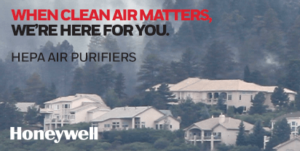How The
Technologies Differ.

True HEPA. The Doctor’s Choice. 1
The “gold standard” in air purification. Filters capture up to 99.97% of microscopic particles (as small as 0.3 micron in size, form the air that passes through the filter). Includes odour absorbing pre-filters.
- The technology that is most often recommended by physicians.
- Captures up to 99.97% of airborne allergens, 0.3 micron or larger, from the air that passes through the filters.
- Mechanical Filtration (particles are forced through and trapped in a high efficiency filter).
- HEPA Filters are replaced approximately once per year.
- Includes odour absorbing pre-filter (replace every 3 months).
1 Library of Congress Online. https://www.loc.gov/rr/scitech/mysteries/static.html
QuietClean® & AirGenius.
Capture up to 99% @ 2 micron (featured in QuietClean® products) and 99.9% at 0.3 micron (featured in Air Genius products).
- Best Technology for general air cleaning, featuring permanent, washable primary filters.
- QuietClean® captures up to 99% of larger particles, from the air that passes through the filters. AirGenius captures up to 99.9% of particles, 0.3micorns or larger that passes through the filters.
- Exclusive Honeywell Air Purifier Technology – Patented ifD® filter
- Electronic Filtration (captures particles are attracted to and captured by the ifD® filter.
- Permanent filter, simply rinse or wash clean.


HEPAClean®
HEPA-Type filters capture up to 95-99% pf particles (as small as 2 micron in size from the air that passes though the filter). Includes optional on-off ionization to boost cleaning power. Odour absorbing pre-filter can be purchased separately.
- Good technology for general air cleaning.
- Captures up to 95-99% of airborne particles, 2 micron or larger, from the air that passes through the filters.
- Mechanical filtration with optional on-off ionization (particles are forced through and trapped in a filter).
- Filters typically need to be replaced once every 4-6 months.
- Optional odour absorbing pre-filter.
Control the source of allergens.
They all use a fan to:
Pull dirty, stale air into the unit. Force the dirty air through a filter that captures pollutants. Return cleaner, fresher air back into room.
Find the right air purifier for you










